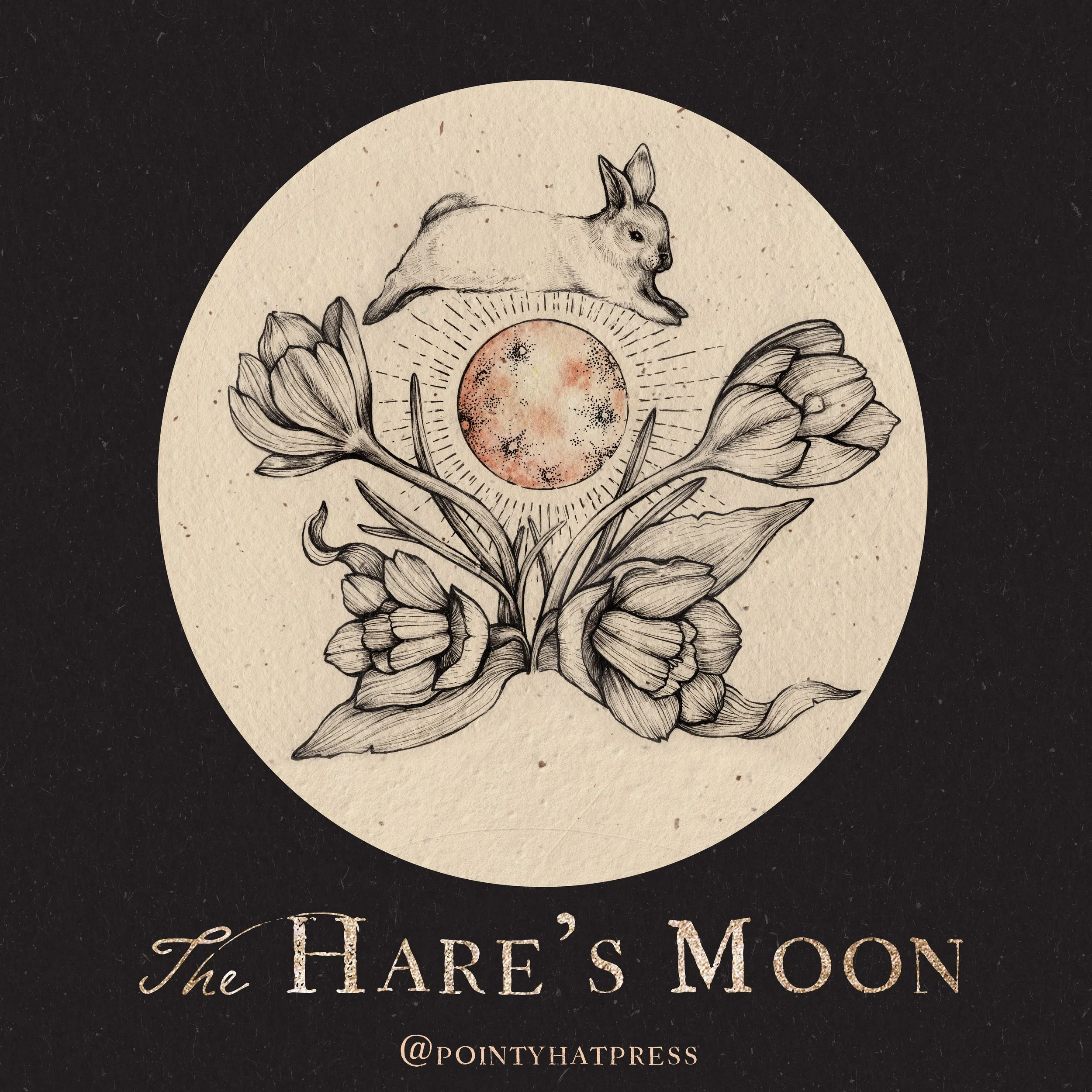Hecate & the Hare: March’s Full Moon
“Not one hare but three, eyes toward the moon,
Like moths to a flame, it’s easy to assume,
Nobody knows a witch without her trusty broom,
Shapeshifting Trinity, let the Hare’s Parliament resume.”
Cloaked in saffron and flanked by spectral hounds, Hecate is the mythical goddess of witchcraft and the moon. In stories, she's a guardian and gardener, tending to poisonous plants and the blossoms that frame shadowy thresholds and opportunities.
When one of Hecate’s flowers unfurls in our path, consider it a 'hello' from the Below or a supernatural wink. As a crossroads deity, Hecate oversees seasonal junctures, be they equinoxes, solstices, or the moon's journey from empty to full.
Whispering from her earthen altar, Hecate returns to the wild places in spring. Masked in moonlit prayers, her arrival is marked by crocus flowers and the return of the springtime goddess, Persephone. Beneath this full moon, Hecate teaches us about resurrection, her crossroads, and following the hasty tracks of the Hare…
Hecate is a gardener of plants and mystery, unmatched in her knowing of seasons and cycles. She's skilled in field magick and floromancy (divination with flowers), and her wisdom permeates from petal to root. Although she is celestial, born from the stars, Hecate planted her heart in the gardens of humanity. Even as a child, Hecate understood that a handful of dirt was as precious as stardust.
Triform and with a torch in hand, Hecate uses her connective influence to unite worlds. For centuries, she's served as a messenger between sky and sea and the places in between. When not in her cave or charioting through the stars, Hecate dwells in her soil sanctuary, a realm of darkness and transformation. She is partial to many plants, including datura, mandrake, henbane, garlic, and crocus blossoms.
Hare's Trinity design from Telling the Bees






